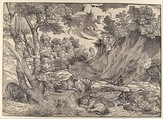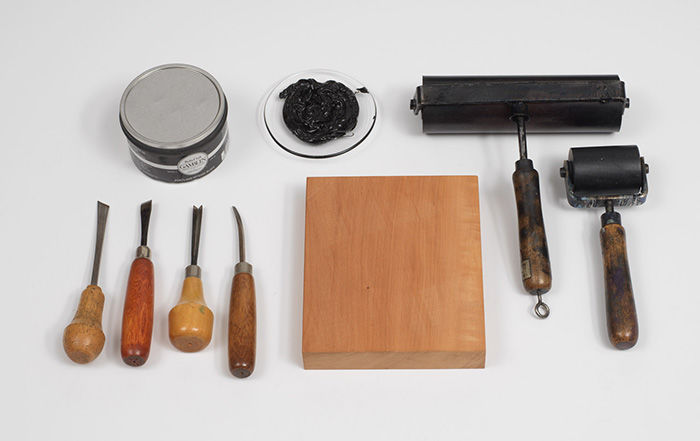St. Jerome in the Wilderness
Attributed to Nicolò Boldrini Italian
Attributed to Giovanni Britto German
After Titian (Tiziano Vecellio) Italian
Not on view
This woodcut illustrates Titian's involvement with printmaking not only as a means of reproducing his drawings but also as a new expressive medium. The subject of Saint Jerome had been a favorite theme in Venetian art since the fifteenth century and was depicted often in paintings by Titian. Here the diminutive figure of the saint is absorbed in a vast, wild landscape appropriate to hermitage and prayer. Nature seems alive in this print—not only do the lions prowl and the deer run, but the trees writhe and twist in the wind, water gushes from an unseen source, the cliffs surge up, and the clouds unfurl in a turbulent sky. The dynamism of the landscape results from the lines that, although carved in wood, swell organically in imitation of Titian's pen strokes and follow the contours of cliffs, earth, and trees. The changing directions of the curvilinear strokes, together with the contrast between areas of dense linework that read as shadow, and the areas of white paper that read as patches of ground illuminated by fitful sunlight, further animate the image. It was through prints such as this one that Titian introduced landscape as an independent theme into Italian art.
The highly skilled block cutter who translated Titian's drawing into a print was formerly identified with Niccolò Boldrini (active ca. 1530–ca. 1570). More recently, the name of Giovanni Britto (ca. 1500–after 1550) has been suggested. Both artists are known to have created woodcuts based on Titian's designs. However, much as one would like to attach a name to Titian's collaborator in the creation of this magnificent woodcut, the lack of clear evidence precludes a definite attribution.
Due to rights restrictions, this image cannot be enlarged, viewed at full screen, or downloaded.


